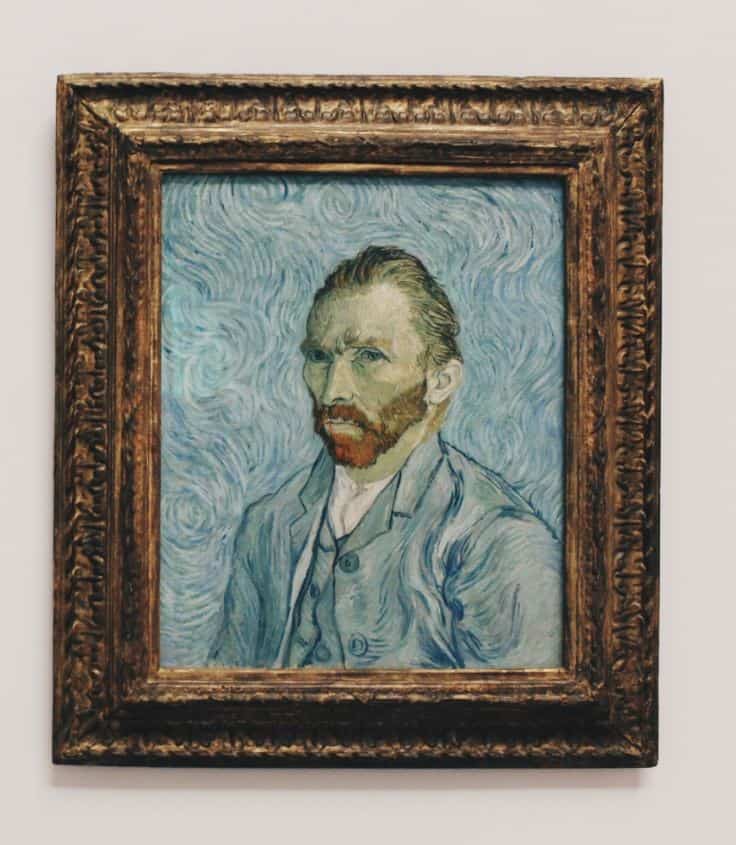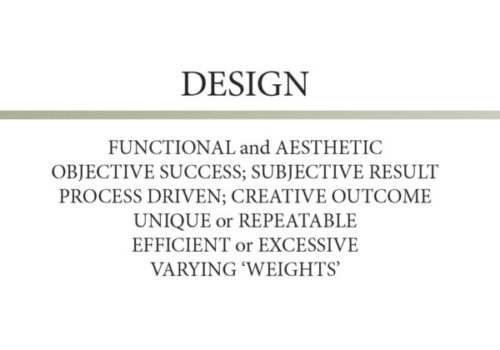Design is where form (or appearance) meets function (or utility).
Almost every man made space around you was designed to meet a function.
Basic needs like shelter, storage, protection etc. have parameters around their design. That said, more sophisticated designs go beyond function.
They evoke feeling – contemplation, security, exposure, exhilaration.
There are many spaces where, if you take the time to notice, we can experience these kinds of feelings. So noticing how spaces you’re in affect you adds another string to your design bow.
Don’t forget almost every item (if not all of them) around you was designed.
A designer spent hours working through iterations to create everything you’re looking at.
That’s why it meets all your needs.
Not only through how it works, but also how it looks.
Throughout history, humans have shaped our reality to suit our needs. Through developing specialist tools, or manipulating our environment.
So What Is ‘The Design Spectrum’?

I tend to position most things developed by the human hand on a spectrum.
At one end we have engineering. Things with tight tolerances, a specific purpose, that are able to be repeated and mass produced if needed.
At the other end we have art. Things (or experiences) that require creativity, spontaneity, reflection, introspection and other personal explorations. Subjective, and not to be produced again (in most circumstances – there are exceptions).
Let’s have a little look through both.
Engineering

Image from unsplash.com
Engineering is all about function first.
The most efficient and effective way of meeting the design requirements.
Engineering has specific aims.
It uses a methodical approach.
The rules it utilises are repeatable. So you generally know the outcome you want before you begin. And mass production is often the aim.
Engineering focuses on reducing waste.
In essence, staying ‘lean’.
Art

Image from unsplash.com
Art sits on the opposite end – it focuses on form. On appearance.
Some would say beauty. Or experience.
Art often lacks a specific function (or even ‘true’ interpretation if it’s postmodern).
It’s a spontaneous, creative process – not meant to be repeatable.
It’s subjective.
True art, while following the same formula, should not result in the same outcome. It can be a representation of reality.
Some artists insist the piece of work is a unique item within the world. Not a depiction, but an object on it’s own.
Art is excess. It doesn’t contribute to any other process.
We don’t need it to survive; yet we need it to live.
Many will argue that engineering can be aesthetic – I agree.
Many will argue art serves a function – I agree there as well.
The difference lies in their priorities.
In engineering, function ‘informs’ form.
For art, that connection is not always clear, or even considered.
What about design?
Design occupies space somewhere between the two.
Design has intent, but allows for (indeed, relies on) creative processes.
In serving a function, it also follows spontaneity and ‘hunches’.
It can be mass produced or completely unique, depending on the field.
It has opportunities for clean efficiency or extreme excess.
You will fall either to the left of this spectrum, or to the right. Or somewhere in the middle, depending on your preferred design style.
You’ll discover ‘gaps’ during the design process.
They sit between spaces or areas in your garden. These gaps are opportunities for the ‘fat’ or excess – in areas or spaces – to expand.
Or you may prefer no expansion. Refusing to allow activities or programs to flow into other spaces.
Your choice in style, among other things, will dictate where you sit on the spectrum.
This doesn’t have to be a conscious thing, but it can shed light on your own design preferences.
By understanding what you like, you can narrow your focus. So you can devote your time more to finding exactly what you want.
Or, be creative and spontaneous.
Do ‘Feeling Lucky searches in Google.
Either way you’re allowing your design to reflect your process.

